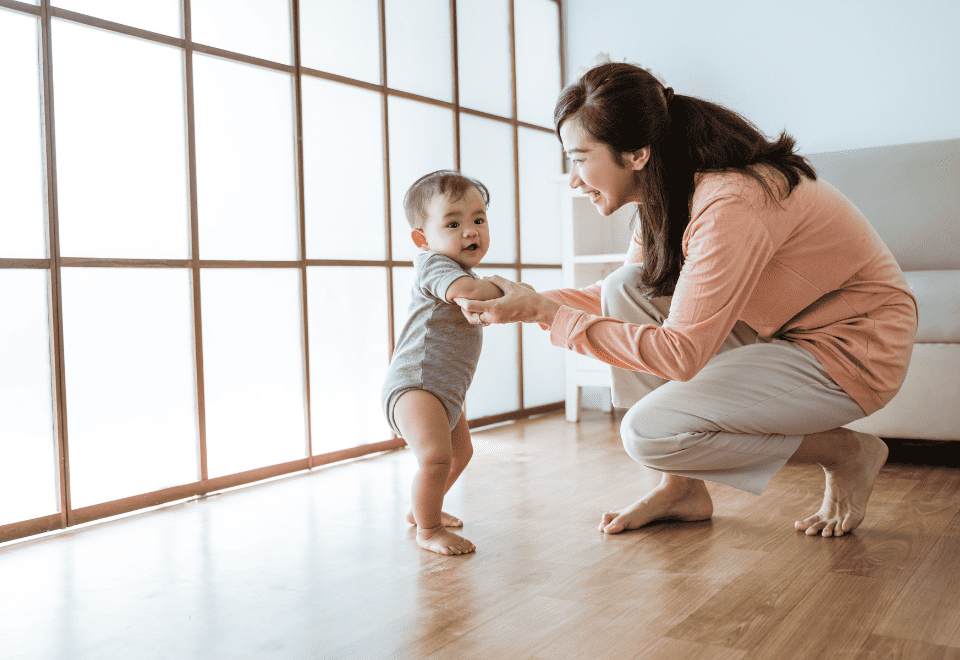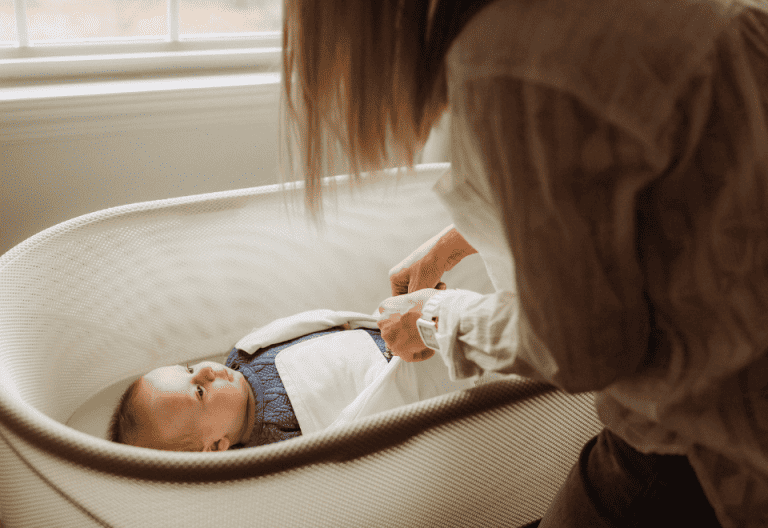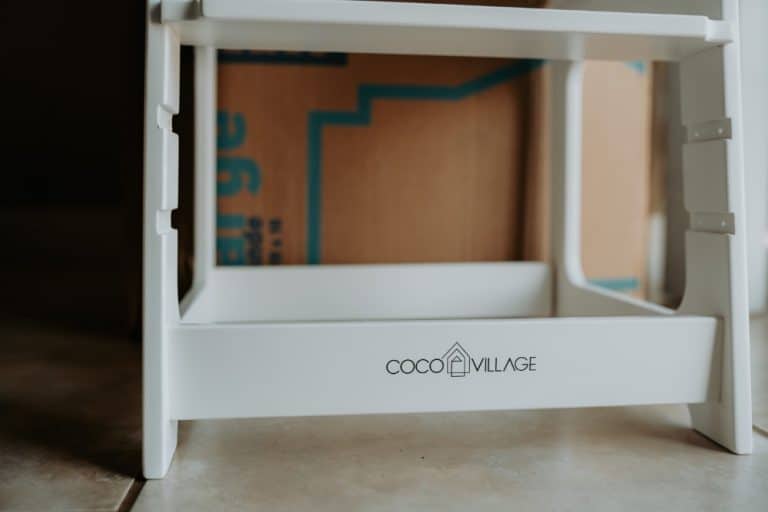10 Simple Ways To Encourage Your Baby To Walk
This post may contain affiliate links, which means I’ll receive a commission if you purchase through my links, at no extra cost to you. Please read full disclosure for more information.
Each baby has their own timeline of doing things including when they want to start walking. But that doesn’t mean we can’t encourage our baby to walk with this list of 10 simple ways to get them to take their first steps!
Every baby is different and some are early walkers while you have those that are late walkers. I happened to have one of each!
10 Tips To Encourage Your Baby To Walk

My first baby started walking when she was just 8 months old while my second was walking at 15 months old. My second was a preemie baby (5 weeks early) but we used these tips below to really help her start walking!
1. Activity Table
Activity tables were one of the first things we decided to get when our baby was holding onto different things like the couch ottoman to stand up. And I felt like the activity table we got her was what helped her feel comfortable taking those first few steps.
2. Baby Walkers

So there are two different baby walkers. There’s the one where you sit them inside a seat and they learn to walk. Or there’s a sit-to-stand learning walker where they lean and push to learn to take their first steps.
This sit-in walker is the exact one my baby has and I 100% believe helped her get used to walking assisted that she felt confident walking by herself. I put her in this quite often while I cooked and cleaned. And this is also the walker that helped her learn how to grab food off the tray (includes a snack tray under the two activity trays).
Other baby walkers:
Safety 1st Dino Sounds ‘n Lights Discovery Baby Walker
This sit-to-stand learning walker was used by her more so after she already knew how to walk. But I do know that this type of walker helped a lot of my friends’ babies to walk.
Other sit-to-stand walker:
VTech Sit-To-Stand Learning Walker
iPlay, iLearn 3 in 1 Baby Walker
Fisher-Price Laugh & Learn Baby
3. Two-Parent Encouragement
My husband spent a lot of time on the floor with our baby. And we would play these games where I’d start off holding her and tell her to go to ‘dada’. Then, she would get super excited and try her best to take multiple steps to my husband. And we would praise her and let her know she did a great job.
The two-parent encouragement in combination with time spent on the floor with her is what also helped give her the confidence she needed to go from a couple of steps to three or four steps.
4. Assist to Stand
Always be on standby and if you notice your baby wanting to go from a sitting position to a standing position, assist them up and keep them standing up. This way, they aren’t getting discouraged every time they fall.
Some might think or say that you’re helping them ‘too much’. But I feel like it helps them believe that they can do it and builds them up. It also helps build their core and leg muscles which are fundamental for walking.
5. Clear up a big area
When your baby is starting to pull themselves up and showing signs that they are ready to start walking, I would start clearing out your living space. We moved our coffee table, rearranged our living room furniture, and basically got rid of excess clutter. And a lot of time was spent on our open living room floor to let her feel free to walk.
Related Posts
Tips On Safely Bed Sharing With Your Newborn
Tried And True Infant Sleep Training Tips
6. Sit on their level
I’ve mentioned this earlier but sitting on the floor and simply being on their level is going to make them feel comfortable which is going to help your baby to walk and take those first few steps.
Babies are still trying to figure out distance and if you’re standing over them, they might be thinking you’re way further away from them than you actually are. Around 4 to 5 months is actually when babies start to learn depth perception and are still not well developed until the age of 2.
7. Barefoot
Keeping your baby barefoot helps develop muscles and ligaments around the ankle and foot while encouraging balance, coordination, and posture.
However, when your baby does start taking their first steps I want to recommend only the best baby walking shoes. And that is the Stride Rite shoes.
8. Toys
Use toys or even their favorite stuffed animal to try to encourage your baby to walk. Hold the toy in front of them just barely out of reach and do this multiple times a day to get them moving.
9. Allow Independence
Definitely give your baby a little space. They’re going to fall several times before they master the skill of walking. But you just have to let them learn while encouraging and praising them when they do take those first steps.
Every baby is different and believe it or not, there are some babies (which might be yours) that don’t like to be watched when they’re trying something new. Just make sure to baby-proof your home and remove any sharp objects.
10. Words of Encouragement

Always, always, always say words of encouragement when you’re teaching your baby how to walk. Even if it’s just getting themselves up to stand or if they take one step. That is a huge deal for babies because they are learning an incredible amount each day and piecing things together like their coordination and movements.
I always used the words “yay” with claps and “go Emi” (daughter’s name is Emory) with a huge smile. And I felt like my baby got a boost of confidence each time I praised her for accomplishing each step she took.
Overall Tips To Help Your Baby To walk
According to Healthline Parenthood, babies can take their first steps from as early as 8 months to as late as their 2nd birthday. Don’t feel discouraged if other babies of the same age are walking before your baby does. Each baby has an innate drive to be mobile and will learn to walk eventually.






